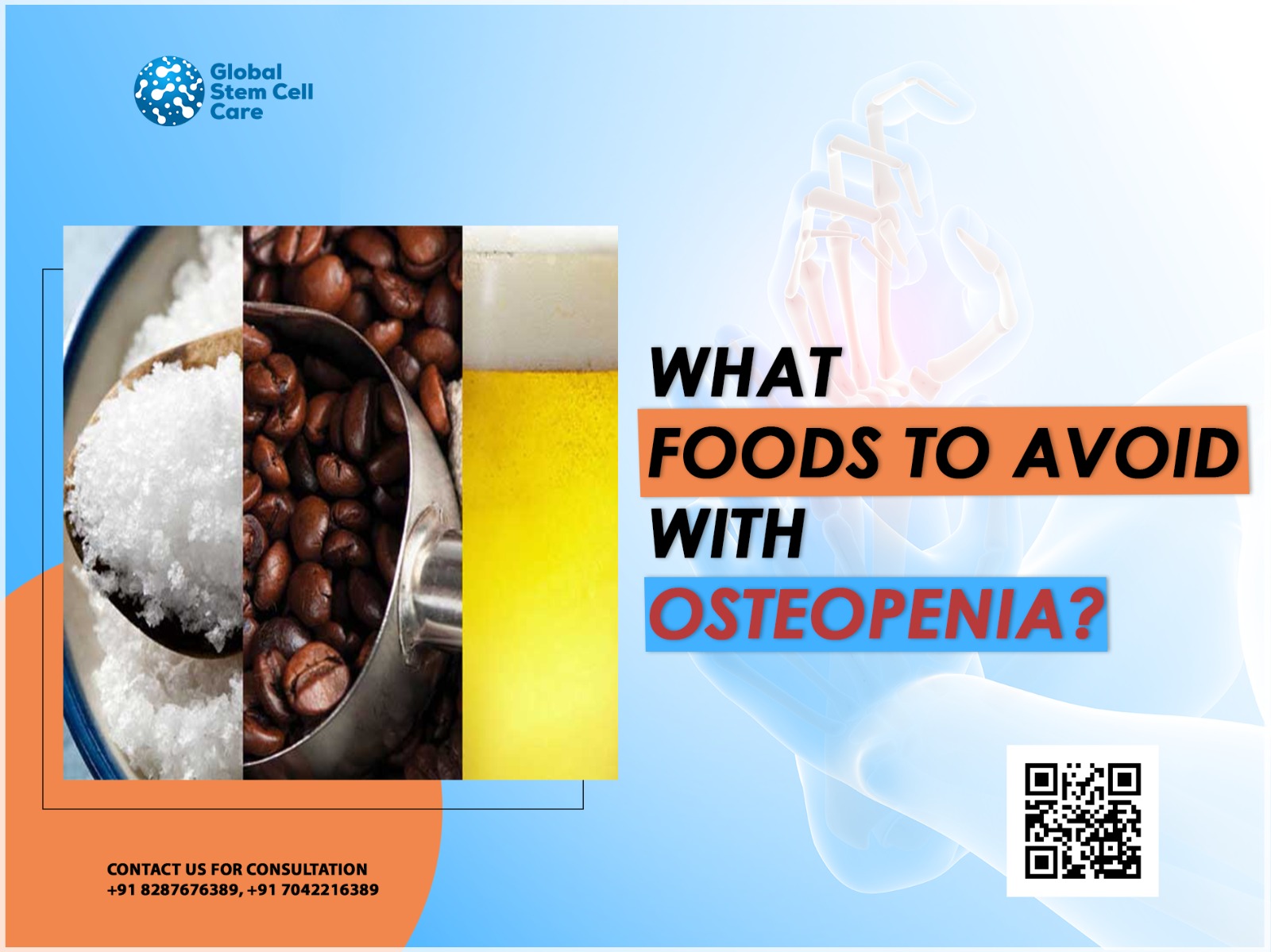Osteopenia is a condition that indicates low bone density and a possible precursor to osteoporosis. It is typically asymptomatic until you break a bone, so treating it early is important. Luckily, it is very manageable when the right nutrition changes are made, and new treatments, like stem cell therapy, allow people to treat osteopenia effectively and develop their bone quality.
In this blog, we will look at foods to avoid if you have osteopenia, how diet affects bone health, and how treatment with stem cells offers a dramatically different opportunity for bone growth.
What is Osteopenia?
Osteopenia describes low bone mineral density. While it is not as severe as osteoporosis, osteopenia is a decrease in bone mass, which can still progress over time, and if untreated, could increase in significance. Most with osteopenia are 50 or older.
Common causes:
- Age
- Hormonal changes
- Inactivity
- Poor intake of calcium and vitamin D
- Alcohol consumption and smoking
Without treatment, osteopenia may lead to brittle bones, increased risk of fracture, and impaired quality of life.
How Stem Cell Therapy Supports Bone Regeneration?
Stem cell therapy is a groundbreaking method of healing degenerative conditions such as osteopenia. This innovative regenerative therapy applies the patient’s own cells to restore and regenerate injured tissue, such as bone.
How it Works:
- Stem cells, including mesenchymal stem cells (MSCs), are capable of becoming bone-building cells, or osteoblasts.
- Next, the MSCs are delivered into the injury site to trigger bone growth from the inside.
- The advantages of stem cell therapy at the site of injury are a decrease in swelling, an improvement in the body’s natural healing capacity, and the possibility of long-term bone thickening.
Stem cell therapy is non-surgical, safe, and a welcome choice for patients wanting to sidestep long-term medication or surgery.
Foods to Strictly Avoid with Osteopenia
In maintaining healthy bones, having strong bones is not just about what you should eat, but also what you should not eat. Some foods can inhibit calcium absorption or promote bone loss.
Here are some foods to avoid that are listed below:
Salty Foods
- Consuming excessive sodium causes calcium to be excreted in urine, weakening bones over time.
- For example: chips, processed meats, canned soups.
Sugar Snacks & Sodas
- Sugar-filled drinks should not be consumed, as they block the absorption of calcium and degrade bone.
- Examples: candy, soda, desserts.
Caffeine
- While caffeine in moderation is not an issue, too much caffeine can reduce calcium absorption.
- Limit: coffee, energy drinks, some teas.
Alcohol
- Excessive alcohol intake can disrupt the acidity and calcium and vitamin D balance.
- Avoid or limit to moderate amounts.
Oxalate foods
- Foods high in oxalates can uptake calcium making it available less to strengthen your bones.
- Be Aware: spinach, beets, rhubarb.
Excess Animal Protein
- Too much animal protein increases the acid load to the body, which can take calcium out.
- To reduce it, use plant proteins with equal amounts of animal protein.
Why Choose Stem Cell Therapy for Osteopenia?
Not focus on just preventing bone density loss like traditional treatments, stem cell therapy seeks to regenerate bone tissue as a treatment for bone loss. Patients have reported:
- Improved bone density
- Reduced risk of fractures
- Enhanced mobility
- Decreased reliance on medication
This holistic and advanced approach is becoming increasingly popular across the globe.
For Consultancy
Global Stem Cell Care, an Indian consultancy, is one of the most sophisticated services that offers consultation for stem cell therapy for diabetes. Purely experts will take care of advice, customize your treatment, take care of safety, and aftercare too.
They have connections with hospitals, specialized physicians, and state-of-the-art lab facilities to aid your recovery.
Putting It All Together
Osteopenia is potentially a sign of bone loss, but it’s also an opportunity to do something about the chances of complications before they get more serious, to reduce the loss. You can do a lot by reducing some foods, and taking better treatments such as stem cell therapy.
Stem cell therapy is a ray of hope for those seeking a natural, long-lasting cure for bone loss, and it starts the journey towards strong bones and a brighter future.
